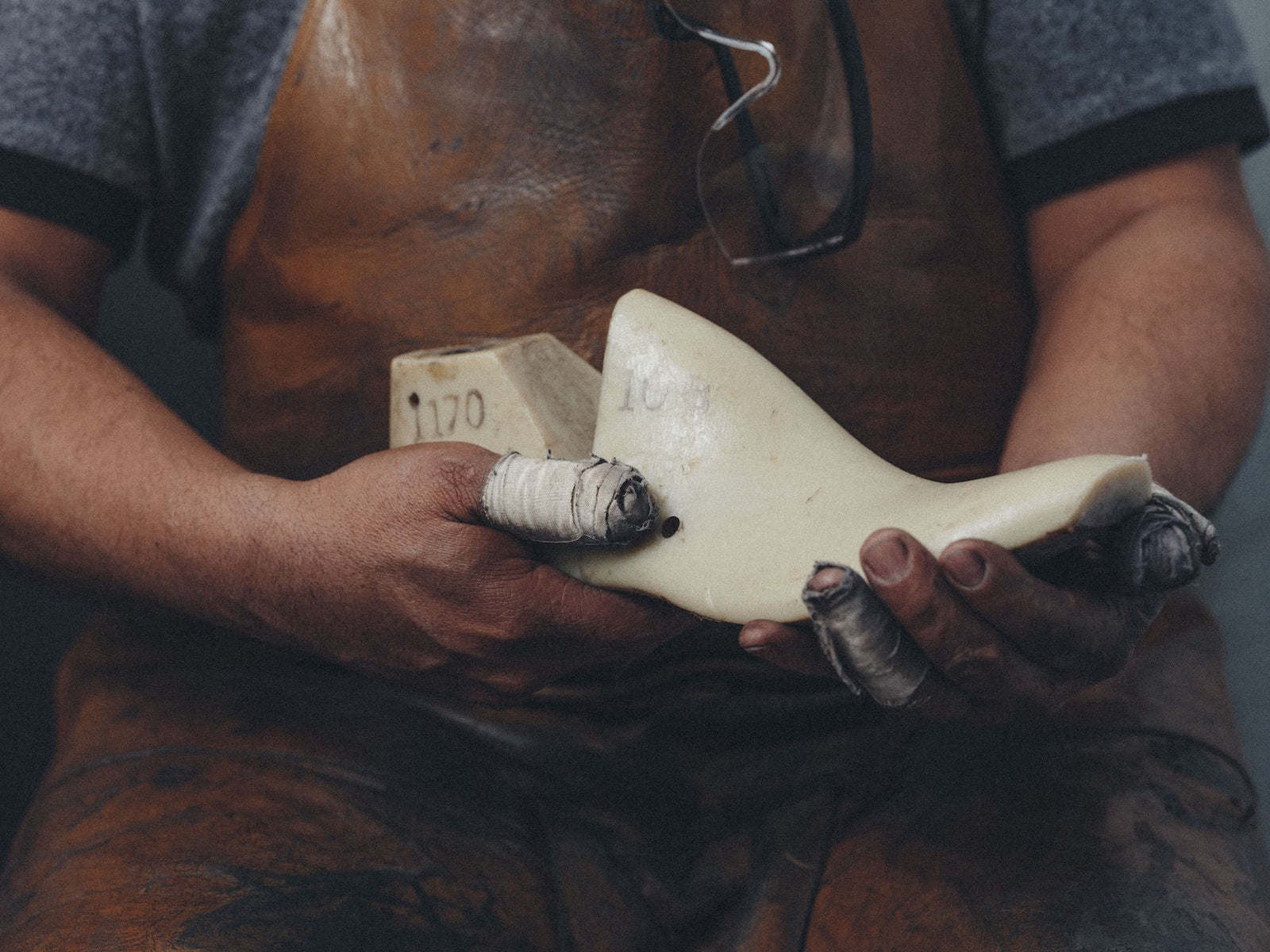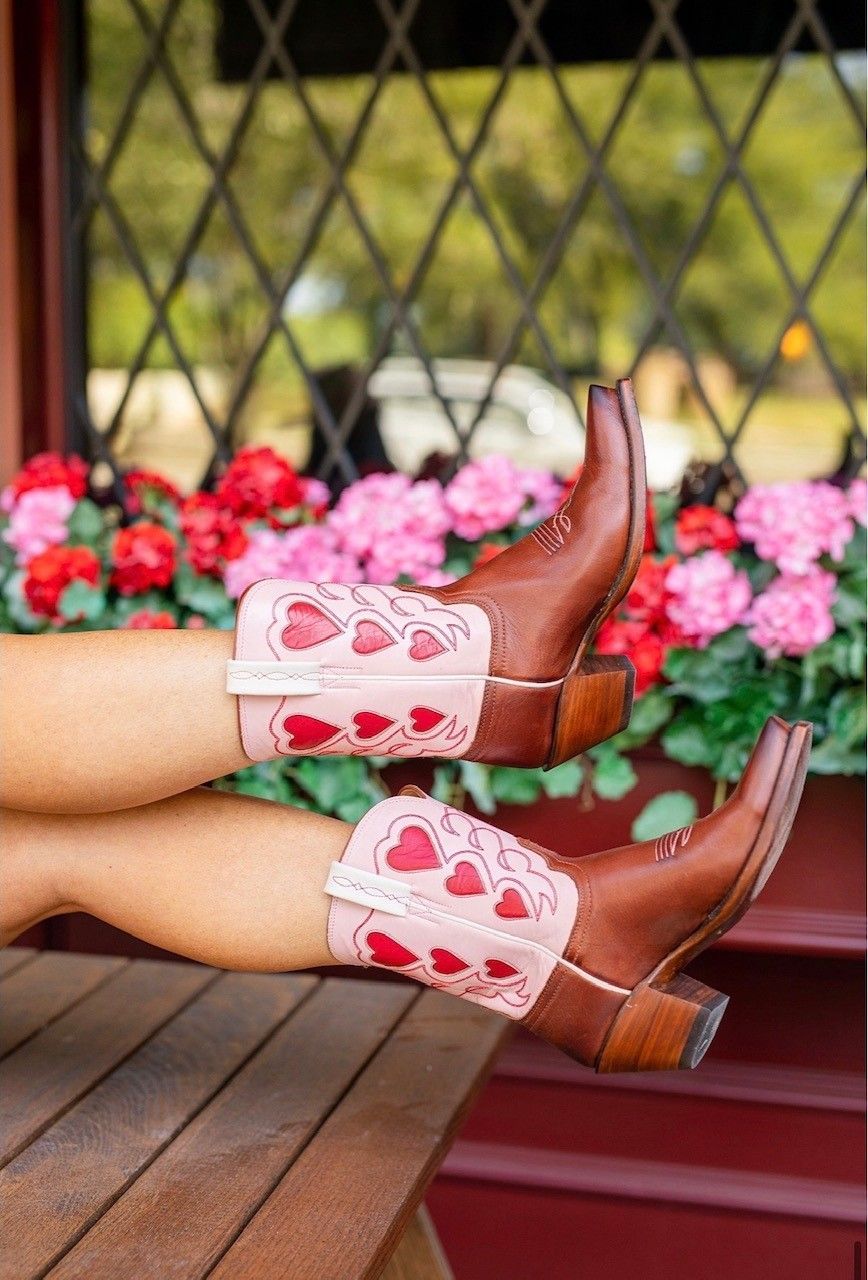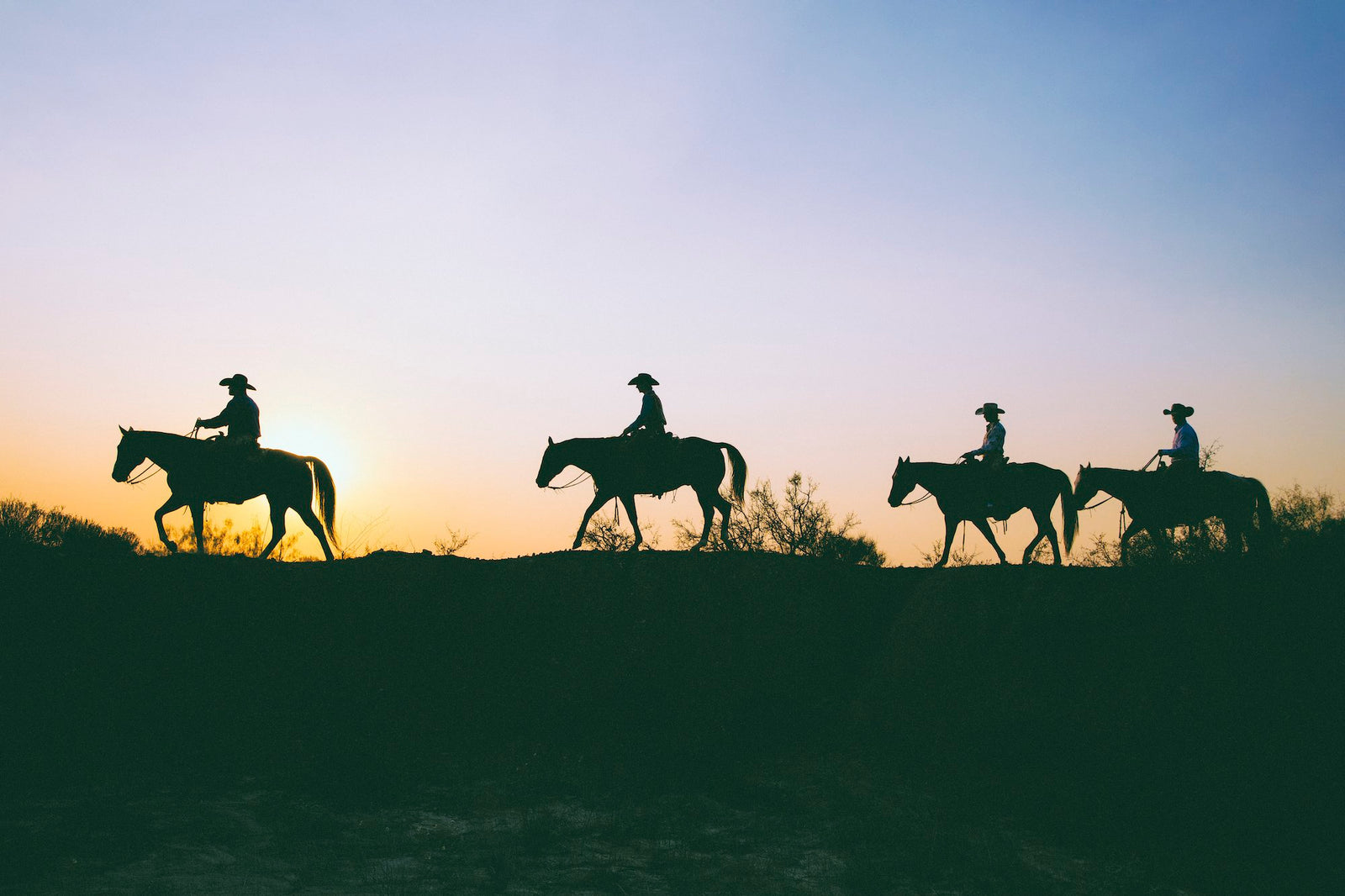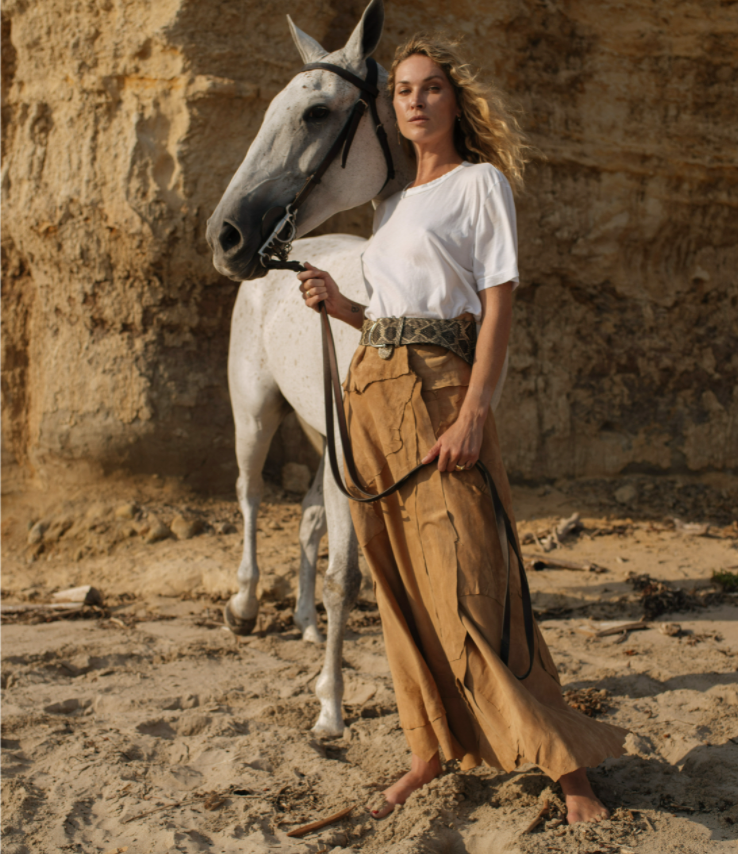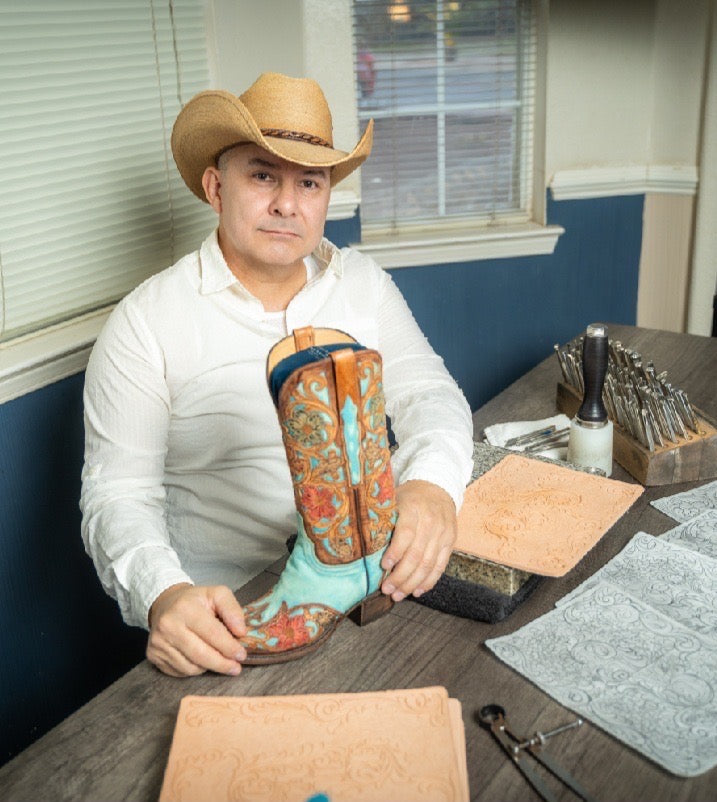
How does someone pull themselves up by the bootstraps when, well, they don't have any bootstraps left? Ask Austin artist Evan Voyles, who lost a good portion of the world’s largest boot collection to a house fire. His answer is a surprising one: Just because an object has changed and may have lost its physical worth, it doesn't mean it's lost its soul.
Voyles is someone you'd have expected to meet in Austin in the 70s; shoulder-length hair often topped with a bandana, and a standard uniform of tattered Levi's and Western boots. He's unfettered and utterly unencumbered by any expectations — a self described "free wheel." It’s no wonder he began seriously collecting boots serendipitously, while living out of his car and traveling the country. And when decades later he lost nearly all of what he’d acquired, he simply called it a metaphorical Viking Funeral.
"There was no breakdown. There was no depression. I just don't think I'm capable of that."
Voyles’ initiation with boots came as a kid in Texas, when his dad bought him "roughouts" and sent him to work on their ranch. "They were cheap, because we were kids who were just going to destroy them or hand them down. Everything I wear now is based on that childhood experience of seeing people in jeans, boots and work shirt. We were working. "
He didn't acquire a "nice" pair of boots until he went off to college at Yale, and he dipped his toes into the world of thrifting for the first time once living in San Francisco as a post-grad. The styles he'd admired as a kid had changed, and the classic silhouettes could only be found buried in piles of junk at places like Goodwill, where he scored his first vintage pair of boots for $1 in San Jose.
"And we were off to the races," he smiles, recounting that moment. After a few years as a paralegal in California, he left it all behind and took to the open road, "collecting stories and photographs." When passing through Texas, he and his sister went to Buffalo Gap flea where the proverbial boot-collecting floodgates came open.
"Up until that point, I only bought for me or for my sister and capped it at $20 . . . But then I got obsessed," he says, explaining he'd soon carry 100 single-boots with him at any given time, seeking out boot experts in the far corners of the country who could identify unmarked styles and makes.
"I became an antique dealer just like any real junkie will — to finance my habit. I kept the best stuff and sold the trash to the street, just like a heroin dealer," he laughs.
By 1987, he had so many that he sent 50 pairs to friends who'd let him crash with them while on this journey, sold 50 more at Austin's City Wide Garage Sale, and had plenty left over. "The economics were staggering. I took a $100 investment, made 50 of my friends happy and made five times my investment. Remember, I'm keeping the best ones. I'm getting my fix and just pushing the other stuff out."
The stuff he kept were the items with "flash" or anything unusual: a differently cut tongue, the way the pull straps were attached, the shank. He then kept meticulous notes and tracked the makers down, somewhat forensically. The endgame being putting the collection — at this point, the largest in the world — in a museum as a study in anthropology. Through Voyles' research and “addiction,” the boots served as a study in Americana that tracked generations, migrations and influences.
And then, suddenly, it was all over.
Voyles awoke to a house fire in 1994 and saw his remaining collection (he'd just sold the majority to a Texan who prefers to remain anonymous and kept about 300 of his favorite pairs) go down in flames. His response? "It worked out great."
"The irony for me is that I have a very low threshold of what I considered ruined. So they were burned, but they weren't gone. They were just hurt."
In fact, Voyles took what anyone else would consider devastating as a blessing: He found a sense of freedom and romance in the moment. Today, he keeps the burned collection (which features several Luccheses) lined on rows and rows of shelves, just like anyone else would pristine boots.
Tucked in the back room of his art studio, the boots have come to signify not only history, but also a journey. One in which materials are transient but stories and experiences — those are enduring. Those are priceless.
"All the monetary value had been stripped to anybody but me,” he says. “But I still love them, and I still think they're beautiful.”


